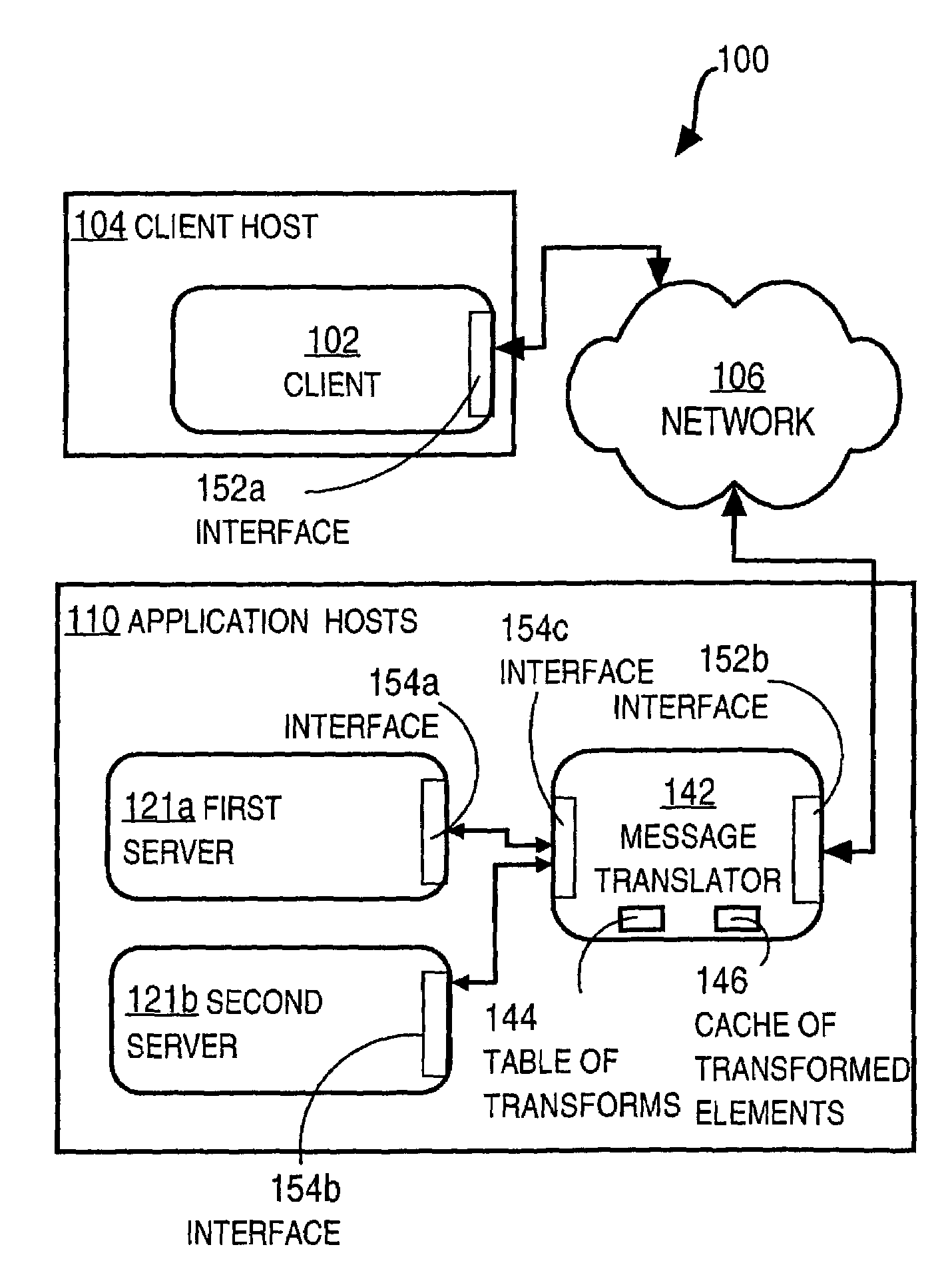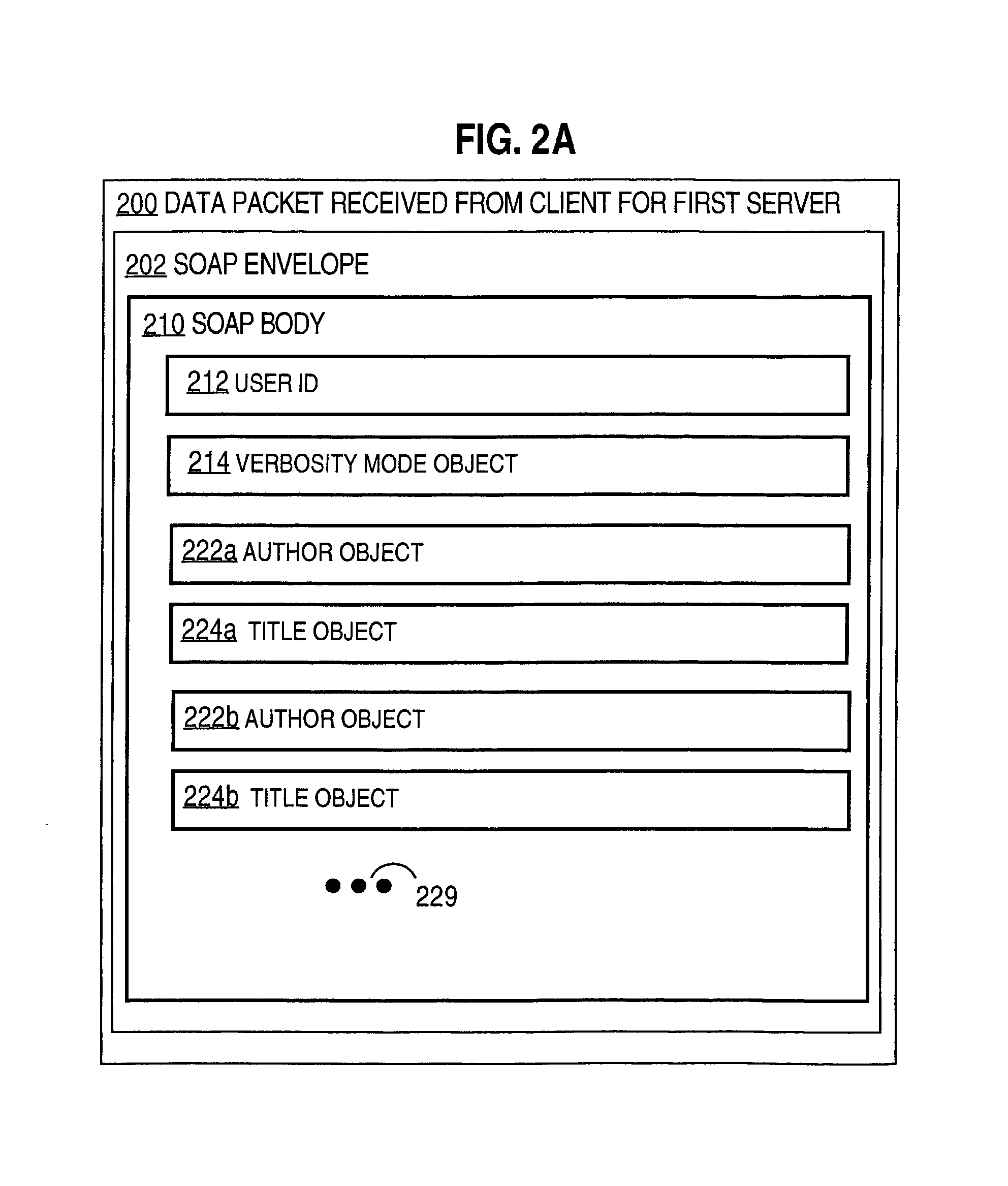Method and apparatus for matching web service in applications using a data object exchange protocol
a technology of data object exchange and web service, applied in the field of protocols, can solve problems such as the failure of sending a query to a b server, and achieve the effect of saving substantial processing of messages and substantial processing savings
- Summary
- Abstract
- Description
- Claims
- Application Information
AI Technical Summary
Benefits of technology
Problems solved by technology
Method used
Image
Examples
example response
[0096 from Second Server
[0097]In response to receiving the request illustrated in FIG. 2C and Table 2, the second server generates and sends the SOAP response message depicted in FIG. 2D. FIG. 2D is a block diagram that illustrates a response message from the second server using a data exchange format with hierarchical elements, according to an embodiment.
[0098]The response arrives in a data packet 280 according to the TCP / IP protocol that identifies the source of the message and the destination as the client 102. In the payload of the TCP / IP packet is a SOAP data exchange message enclosed in a SOAP envelope 282. The SOAP envelope 282 is simply the root level hierarchical element of the SOAP message hierarchy. Attributes of the SOAP envelope (not shown) indicate that the message is for client 102 on host 104, and indicates the network resource that defines the schema (the hierarchical elements) for the Body of this particular SOAP message. A hierarchical element at the second level ...
embodiment 400
[0128]FIG. 4 is a flowchart that illustrates an embodiment 400 of a method performed by the message translator in steps 326 and 330 of FIG. 3. In steps 326 and 330 a message has already been received at the message translator. The message translator produces an output message in response to receiving an input message. In the illustrated example, it is assumed that the input message is the request of Table 2 for the second server, and the output message is the request of Table 1 for the first server.
[0129]In step 402, the next element in the current level of the hierarchy of elements in the message is selected. According to an illustrated embodiment, the hierarchy is traversed from the top (root) level to successively lower levels of the hierarchy. When step 402 is first performed, the current level of the hierarchy is the root level of the hierarchy. When step 402 is first performed on a SOAP message, the current level is the SOAP envelope level. At subsequent times, the current lev...
PUM
 Login to View More
Login to View More Abstract
Description
Claims
Application Information
 Login to View More
Login to View More - R&D
- Intellectual Property
- Life Sciences
- Materials
- Tech Scout
- Unparalleled Data Quality
- Higher Quality Content
- 60% Fewer Hallucinations
Browse by: Latest US Patents, China's latest patents, Technical Efficacy Thesaurus, Application Domain, Technology Topic, Popular Technical Reports.
© 2025 PatSnap. All rights reserved.Legal|Privacy policy|Modern Slavery Act Transparency Statement|Sitemap|About US| Contact US: help@patsnap.com



